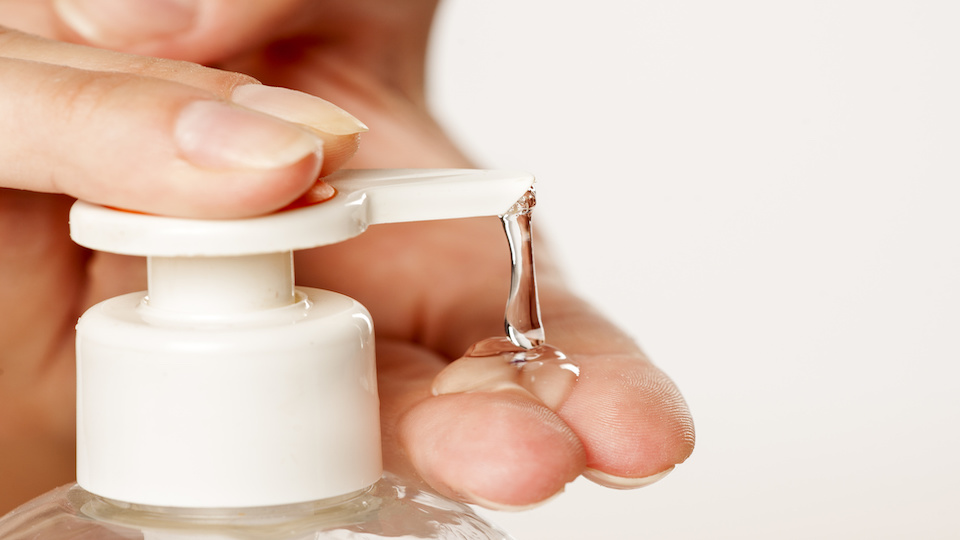How often do you turn to a few quick pumps of hand sanitizers instead of taking the time to thoroughly wash and dry your hands? Marketed as an effective alternative to traditional hand washing, hand sanitizers are not all they are cracked up to be. Here’s what you should know.
The Centers for Disease Control and Prevention has this to say,
High alcohol content not even enough to guarantee protection
Even if you use hospital-grade hand sanitizer, this is not enough to guarantee any protection during flu season. The reason for this is because the majority of people don’t know how to use hand sanitizer properly. The best way to keep your hands entirely sanitized is to apply sanitizer to the entire hand, not just your palm. In addition, sanitizers work best in clinical settings where hands are mostly clean but may just come in contact with dangerous pathogens. For everyday use – such as a mother with three little kids who may spend most of the day with dirty hands, sanitizers are not particularly helpful.
“Hands may become very greasy or soiled in community settings, such as after people handle food, play sports, work in the garden, or go camping or fishing. When hands are heavily soiled or greasy, hand sanitizers may not work well, ” says the CDC.
History of hand sanitizers
Hand sanitizers were invented in 1966, when Lupe Hernandez, a California Registered Nursing student, figured out how to deliver alcohol through a gel to provide an instant hand-cleaning experience. The use of these products caught on in the 1990s, and has since spread like wildfire.
The hidden dangers of hand sanitizer
Many hand sanitizers contain triclosan
One common ingredient in hand sanitizers, and most anything labeled “antibacterial,” for that matter, is triclosan. This chemical is actually used as a pesticide, besides being featured commonly in our personal care and household cleaning products.
The principal danger regarding triclosan use is its role in the global epidemic of antibiotic resistance. When we are constantly exposing bacteria to antibacterial agents, they learn to adapt.
When we use products with triclosan constantly, the bacteria that these products are designed to kill end up developing an immunity to it and sharing this immunity with other types of bacteria through DNA transfer.
Triclosan has been shown to accumulate in fat tissue, and has been found in human urine, blood and breast milk samples. It is also a hazard to the environment, as it has been discovered to accumulate in lake sediment.
When it comes to hand hygiene, all you need is to wash your hands with good old fashioned soap and water. Organic soap is always best to avoid the hundreds of chemical additives that may be present in conventional varieties. However, it is understandable to want something with you to quickly clean up on the go when you can’t get to a sink.
For this situation, a small spray bottle of witch hazel can effectively do the trick, without drying out your skin or introducing harmful chemicals into your system.
Hand sanitizers may contain chemical fragrances
Scented hand sanitizers can be especially dangerous, as they often contain chemical fragrances. These fragrance mixes can contain an array of potentially toxic ingredients, many of which are not found on the label, as manufacturers are not required by law to disclose what is in them, and can withhold much of their chemical makeup as a “trade secret.”
These artificial fragrances can be quite irritating to some people and have been linked to allergies, respiratory ailments, and potential hormonal disruption.
A number of hand sanitizer brands contain parabens. These chemical preservatives are added to halt the growth of microorganisms, giving the sanitizer a virtually infinite shelf life.
Quite a bit of research has been performed on parabens in recent years, and they have been linked to many potential health concerns including elevated estrogen levels, endocrine disruption, toxicity to the immune, reproductive and nervous systems, and even some hormonally-based cancers.
Hand sanitizers may weaken your immune system
Along with potentially contributing to antibiotic resistance, overuse of antibacterial hand sanitizing products can weaken your immune system. There is such a thing as being too clean. When we do not expose our immune systems to the germs around us once in a while, they do not gain experience in dealing with the invading pathogens.
The bottom line on sanitizers









